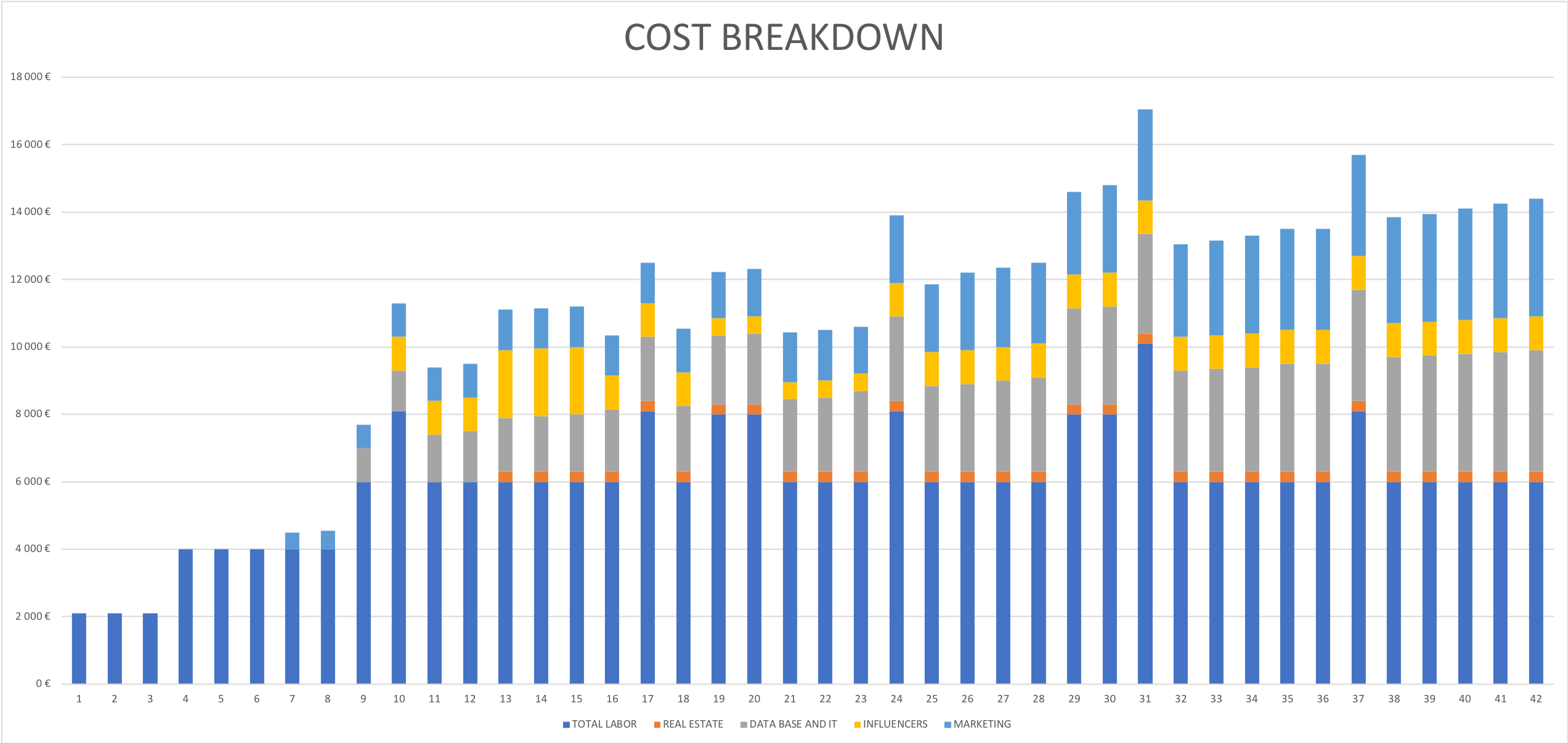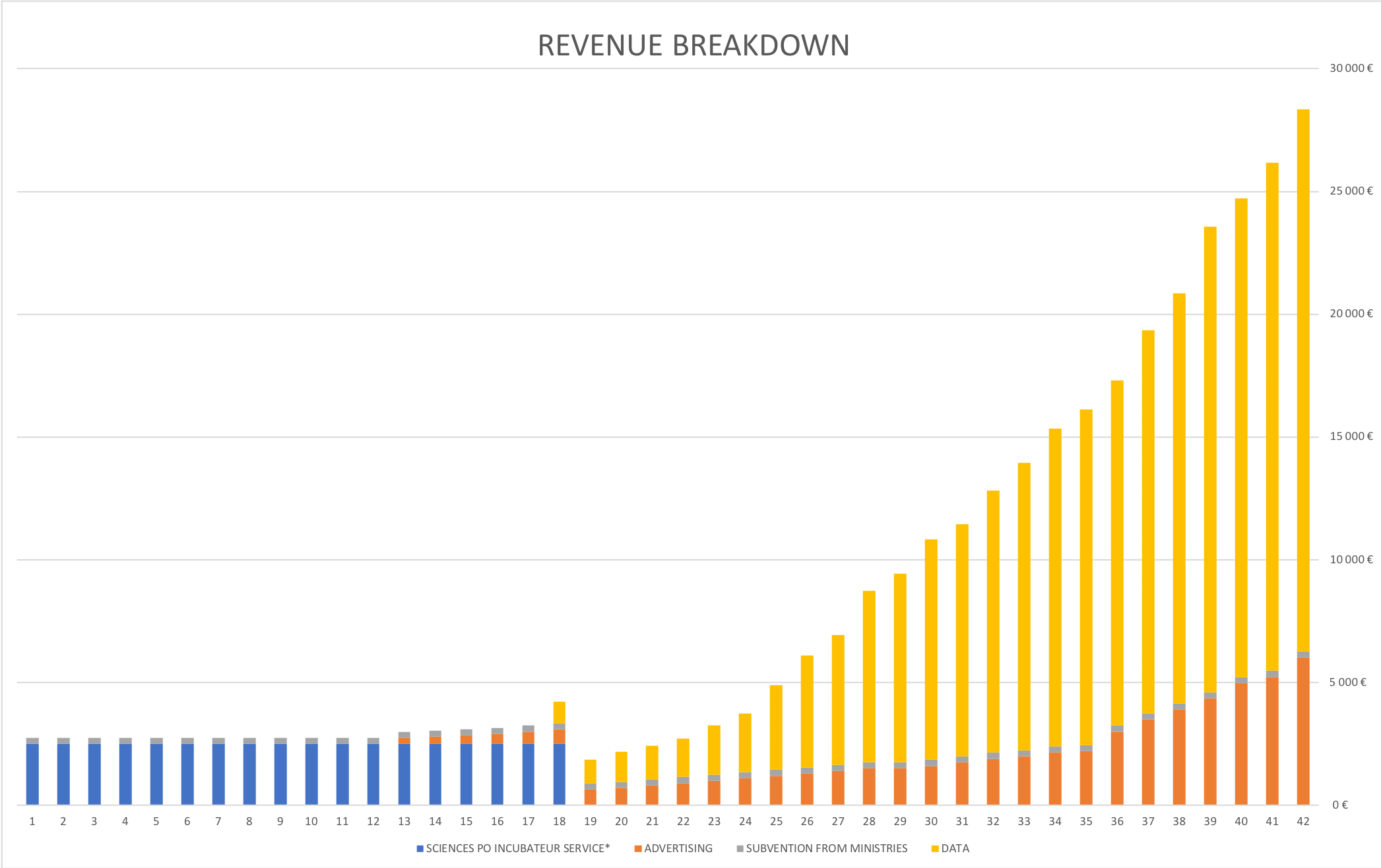Return on investment analysis
Our application is based on the offer of recipes which is why we would need to hire a cook for three months. He would be in charge of creating all recipes. The food expenditure budget will be calculated from the average student budget. What is more, the most important cost for Foodly will be the one linked to the application development. The first step will be to buy a brand name, and then a domain name for the app. It is also strongly recommended to rent a server to increase our application’s productivity and to perform regular maintenance tasks. We take into account the following wages : a developer with strong design skills, a partnership manager (that has to find sustainable supermarkets and firms), a data analyst (that will create the algorithm that propose a recipe regarding the student needs), a lawyer specialized in data. We hope that “L’incubateur Sciences Po” will offer us an office, an accountant and a lawyer for one year - so that we could focus on the launch of the application. After one year, we aim at renting an office space in a coworking office. Communication and accounting could then also be done by ourselves. Possibly created costs in marketing, such as for influencer’s ‘posts’ (an average of 500€ for one post), have to considered as well. Other costs will be linked to more “traditional” communication campaigns, namely with publications on social networks and online advertisements. We want to share it on Play store and Apple store, that cost respectively 25€ and 99€.
As Foodly is a free app which can be easily used by students, we need some funds from venture capital, crowdfunding campaign and business angels in order to be profitable. We hope to receive financial support from “L’incubateur de Sciences Po” that helps Sciences Po students finance smart entrepreneurial projects. We could also receive sponsorship from sustainable supermarkets and companies that we will promote in return. With this money the prelaunch and the launch phase could be covered. Collected data could be sold to research institutes and firms - which would thus substitute as an income.
We established financial forecast composed by making a cost breakdown and revenue breakdown for the three first years and half. After 2 years and 8 months, we could reach the financial equilibrium.







